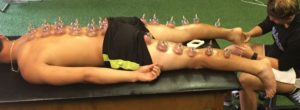I love when I get questions from readers of New Functional Training for Sports.

It’s exciting to know that the book is making people think. I received a few questions about static stretching and, thought I’d answer them here.
Q- New studies are coming out about static stretching. Some say 30 sec and less is beneficial however over 60 sec is detrimental, please elaborate if you agree or disagree?
A- We rarely hold a stretch longer then 30 seconds so I’m not sure it matters in our case. One thing I know is that the research will keep changing. The other thing I know is that stretching helps to prevent injury.
Q- As a staff we are wondering how you incorporate static stretching and foam rolling prior to exercise into your program?
A- On pages 46 and 47 I outline it. Everybody rolls as a group first, then stretches, then performs a dynamic warm-up sequence.
Q- How long do you hold the static stretch?
A- Probably about 10-15 sec in each position. We try to think breathes these days so two to three breathes.
Q- Do you go after numerous muscle groups (static stretching, foam rolling) before each session? or just pick one major muscle group to go after that day?
A- We try to roll and stretch all the major muscles groups. Rolling tends to focus on the backside ( think about the creep concept discussed on page 41). Stretching focuses on lower body making sure we hit adductors, hip flexors, hip rotators, and lateral hamstrings. ( pg 47)
Q- Do you still static stretch and foam roll post exercise?
We don’t discourage it but, it’s not formal. Pre-workout is formal and mandatory.
Hope this helps. If you want to ask questions every day think about a Strengthcoach.com membership. I answer questions every day there.
from Michael Boyle's Strengthcoach.com Blog https://strengthcoachblog.com/2016/08/31/static-stretching/
Visit Us At: via IFTTT


